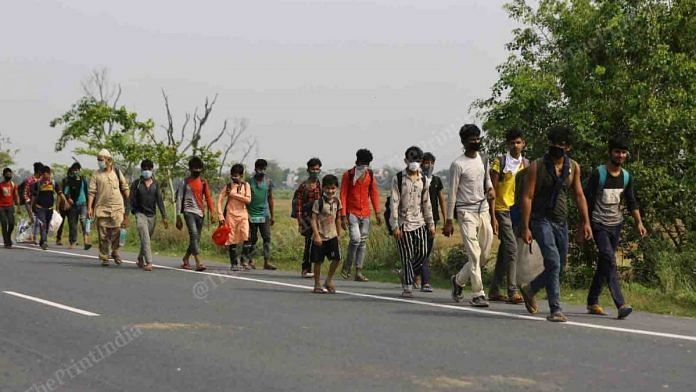New Delhi: The Union cabinet Wednesday approved the development of affordable rental housing complexes (ARHCs), to ensure that lakhs of migrant workers in cities have decent and affordable places to live. The cabinet also decided to utilise existing vacant government-funded houses, built under UPA-era schemes, by renting them out to migrants.
Sources in the Ministry of Housing and Urban Affairs said the rent will vary anywhere between Rs 1,000 and Rs 3,000 per month. Municipalities will decide on who gets the houses on rent.
To start with, approximately 3 lakh migrants, including construction workers; service providers in hospitality, health, domestic and commercial establishments; and students will be able to avail rental housing.
Welcoming the cabinet’s decision, Housing Minister Hardeep Singh Puri tweeted: “ARHCs will offer dignified living spaces to a large part of our urban workforce which migrates to urban centres in search of employment but are forced to live in squalor. ARHCs will create a new ecosystem in cities making affordable rental housing available close to place of work.”
Also read: After jobs, Yogi’s UP govt plans to come up with low-rent housing for returning migrants
UPA-era houses to be used
Addressing the media, Information and Broadcasting Minister Prakash Javadekar said some 1.8 lakh one-room tenements are already lying vacant in 107 cities. These were built under UPA-era schemes like Jawaharlal Nehru National Urban Renewal Mission (JNNURM) & Rajiv Awas Yojana (RAY). ThePrint had reported on 17 June on the government’s plan to use vacant houses under JNNURM and RAY to provide affordable rental housing for migrant workers.
While both JNNURM and RAY are UPA-era programmes, the 1.8 lakh houses that have been added to the ARHC scheme were completed after the Narendra Modi government came to power in 2014.
The JNNURM, which was launched in 2005 for a seven-year period, was extended twice — first till March 2014, and then until March 2017. RAY was subsumed under the Pradhan Mantri Awas Yojana, which was launched by PM Modi in June 2015.
“Existing vacant government-funded housing complexes will be converted into ARHCs through concession agreements for 25 years. The complexes will revert to urban local bodies after 25 years to restart the next cycle like earlier, or run on their own,” Javadekar said.
Besides, another 1.15 lakh housing units and dormitories that will accommodate up to six people, will be built under a sub-scheme of Pradhan Mantri Awas Yojana. This was announced by Finance Minister Nirmala Sitharaman as part of the ARH scheme on 14 May.
“Together, they will be able to accommodate 1.35 lakh people,” Javadekar said.
A housing ministry official said they are working out the modalities regarding eligibility criteria for the different categories of rental housing units.
An expenditure of Rs 600 crore in the form of Technology Innovation Grant will be released for projects using identified innovative technologies for construction, a government statement said.
Javadekar added that to attract private developers as well as urban local bodies to build more rental housing stock, incentives like 50 per cent additional Floor Area Ratio as well as tax sops will be offered.
The migrant crisis
The Modi government has copped a lot of flak for failing to anticipate the migrant crisis when announcing the nationwide lockdown to curb the spread of Covid-19.
It intervened later and provided trains and buses for the migrant workers to return to their homes, and announced free ration items, but the opposition is pressing for more relief measures such as transferring money to the migrants and giving them employment.
No government agency has a database of the total number of migrant workers in India. The Modi government had earlier this month informed the Supreme Court that approximately 1 crore migrant workers had returned home in Shramik Special trains, buses and on foot since the lockdown began on 25 March.
Also read: Job loss, rent and exodus — Covid-19 crisis tells us migrants need housing security







This is an excellent idea, to give them low rent housing. Also, they should be given ration from the local ration shop wherever they are situated, on the basis of Aadhar card and not the ration card, because they won’t have the latter as they do not have a permanent address in that location.